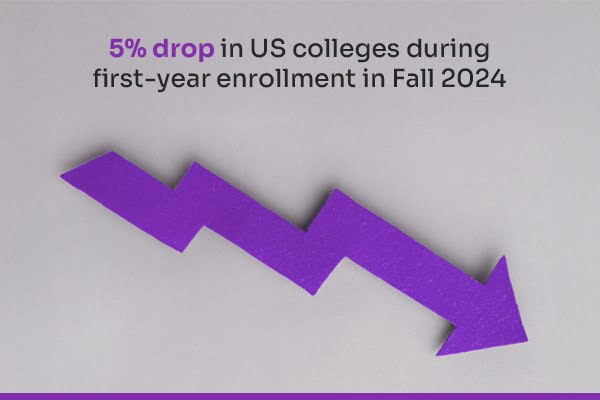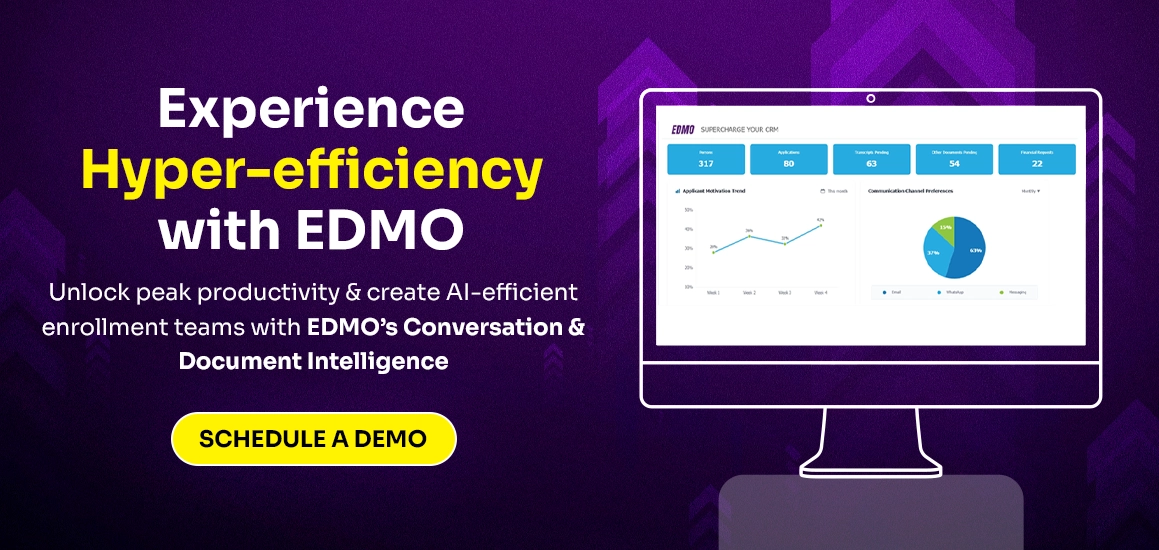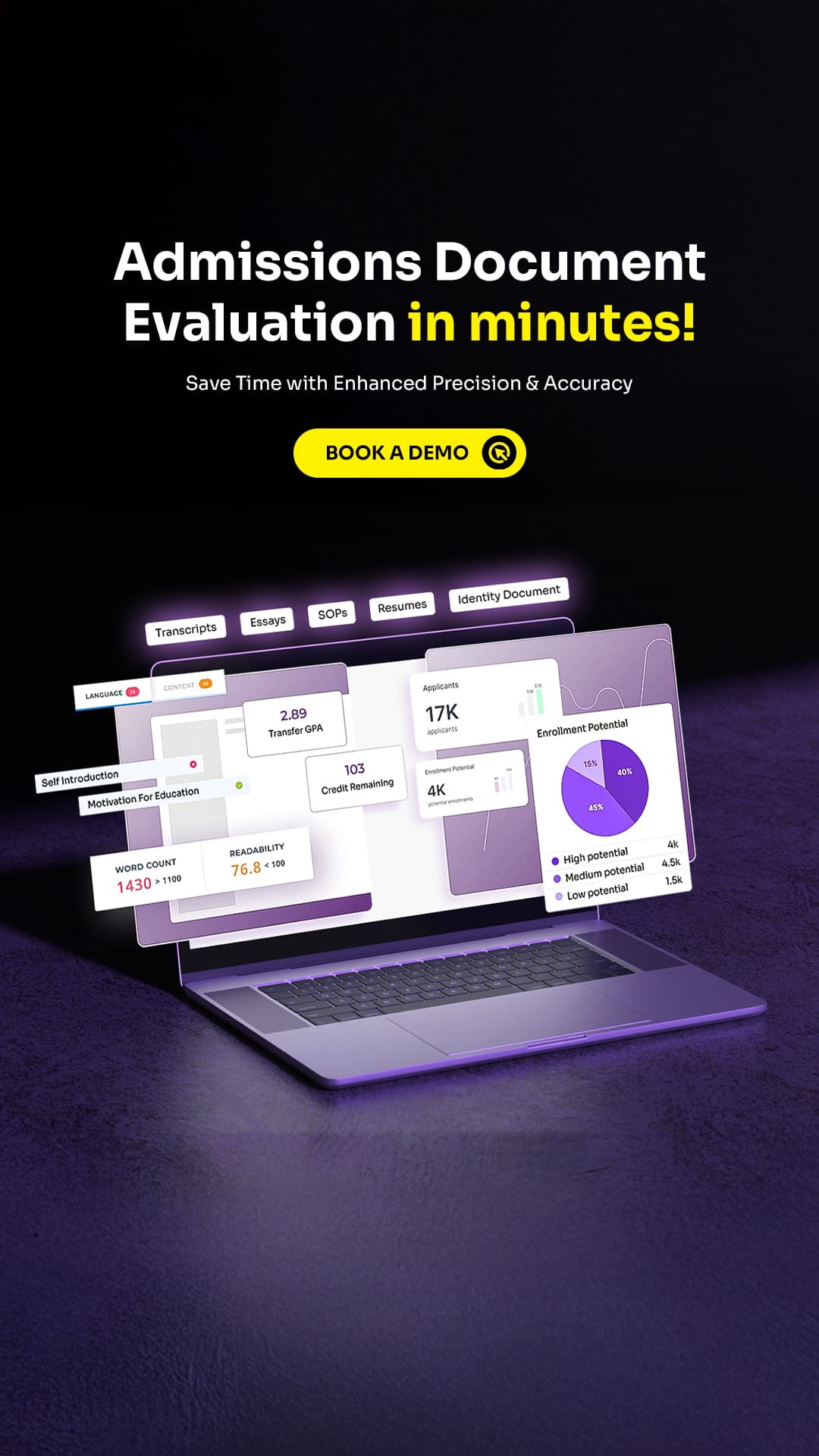Enrolling students is an important priority area for colleges, yet an even more uphill task is retaining them. Implementing the right student retention strategies like personalized support, gamified learning, and flexible graduation pathways can create a remarkable impact on the endeavor. Let’s see how!
Table Of Contents
Student retention is a looming concern for the university’s admissions department, given the fact that new challenges are cropping up in the higher education domain. In 2024, first-year enrollment dropped by 5%, following a 3.4% increase in 2023. In 2022, first-year enrollment decreased by 4.7%, and in 2021, there was a 3.1% decline.

While attracting new students is important, it’s equally important for colleges to focus on retaining current students to maintain enrollment. The good news? Retention rates are improving.
Let’s talk about statistics! USA’s National Center for Education Statistics’s 2019 data stated that:
The overall retention rate for first-time and full-time undergraduate degree students who took admissions in 4-year degree-granting colleges in Fall 2019 was 82%. But the important thing to note here is that the retention rates were highest only in a few selective institutions that have low acceptance rates. Public higher education institutions’ retention rate, which is also selective in nature was an impressive 96%, whereas the colleges which are known for higher acceptance rates and advocated an open admissions policy were only 59%. Similarly, the retention rate at private non-profit 4-year institutions was 92% at the most selective institutions and 64% at the least selective institutions.
According to a recent report, the national persistence rate for students who started college in the fall of 2022 has risen to 76.5%, and the retention rate has increased to 68.2%, the highest in a decade. This progress shows that with accurate student retention strategies, colleges can keep students engaged and perhaps, maintain a successful record for retaining them as well. Wondering how to improve student retention in higher education? Let’s dive into the top strategies for boosting student retention in 2025!
How Can Universities improve the retention of students?
Student retention is an important factor for universities striving to maintain growth and stability. Using the right student retention strategies can ensure that students stay engaged and complete their education. Let’s see how universities can improve retention rates through AI.
Use AI Chatbots for Personalized Support
AI chatbots provide instant, personalized assistance to students, answering their questions and guiding them through academic processes. By offering 24/7 support, chatbots ensure students receive timely information, which boosts their confidence and engagement. New York University partnered with EDMO to implement Violet, an AI chatbot, to streamline student support. Violet improved response times, enhanced operational efficiency, and reduced the workload. This allowed NYU to manage more student inquiries effectively.
Use AI to Predict and Assist At-Risk Students
AI can evaluate student data to identify those who are at risk of dropping. By looking at factors like attendance, grades, and engagement, AI systems can predict which students need support. Early identification helps colleges to intervene before the situation worsens. While only 40% of colleges use predictive AI for enrollment and retention today, the potential for AI in this area is vast. By expanding its use, colleges can support students, improving retention rates. Research shows that early intervention can reduce dropout rates by as much as 25%.
Make Learning Interesting with Gamification
Gamification has proven to be a powerful tool for increasing student engagement. By using game-like elements—such as points, badges, and challenges learning becomes more interactive. A study published in the Journal of Applied Psychology found that gamified learning experiences can increase retention rates by as much as 90%. Additionally, a PwC study showed that gamified environments can increase learner engagement by 60%. When students feel motivated and rewarded for their achievements, they are more likely to remain enrolled.

Offer Flexible Paths to Graduation
Credit transfer allows students to bring academic credits from one institution to another, offering flexibility in their education. AI helps universities quickly check and approve credits, saving time and effort. This flexibility helps students stay on track to graduate. With EDMO’s Document Intelligence, universities can automate credit evaluations with precision. Institutions using EDMO complete transfer credit evaluations in under 4 hours, ensuring a seamless process.
Building Connections Through Technology
Research highlights the importance of social connections in boosting student persistence. A 2024 Student Voice survey found that 28% of community college students believe that opportunities for social engagement significantly affect their academic success. To address this, colleges can use technology to create virtual student organizations and mentorship programs.
Conclusion
As we enter 2025, it’s clear that student retention is an essential area of focus for colleges and universities. Colleges can use effective student retention strategies by creating a sense of belonging, using AI to provide personalized support, predicting and assisting at-risk students, using gamification in learning, and offering flexible paths to graduation. These student retention strategies can help colleges not only keep students enrolled but also ensure they are engaged and motivated to graduate, ultimately leading to better results and financial stability for colleges. At EDMO, we are proud to be the only CRM-integrated AI solution in the market for student enrollment, helping institutions improve engagement and retention.
Also Read: EDMO inks partnership with Anunaad Public School to assist potential study abroad students
K-12 Guide | Empower your advisors with the Power of Technology
Fisher College collaborates with EDMO to boost their student engagement and admission strategy
EDMO Partners with Tinsukia Commerce College to Simplify Study Abroad Applications









No comments yet. Be the first to comment!
Leave a Comment